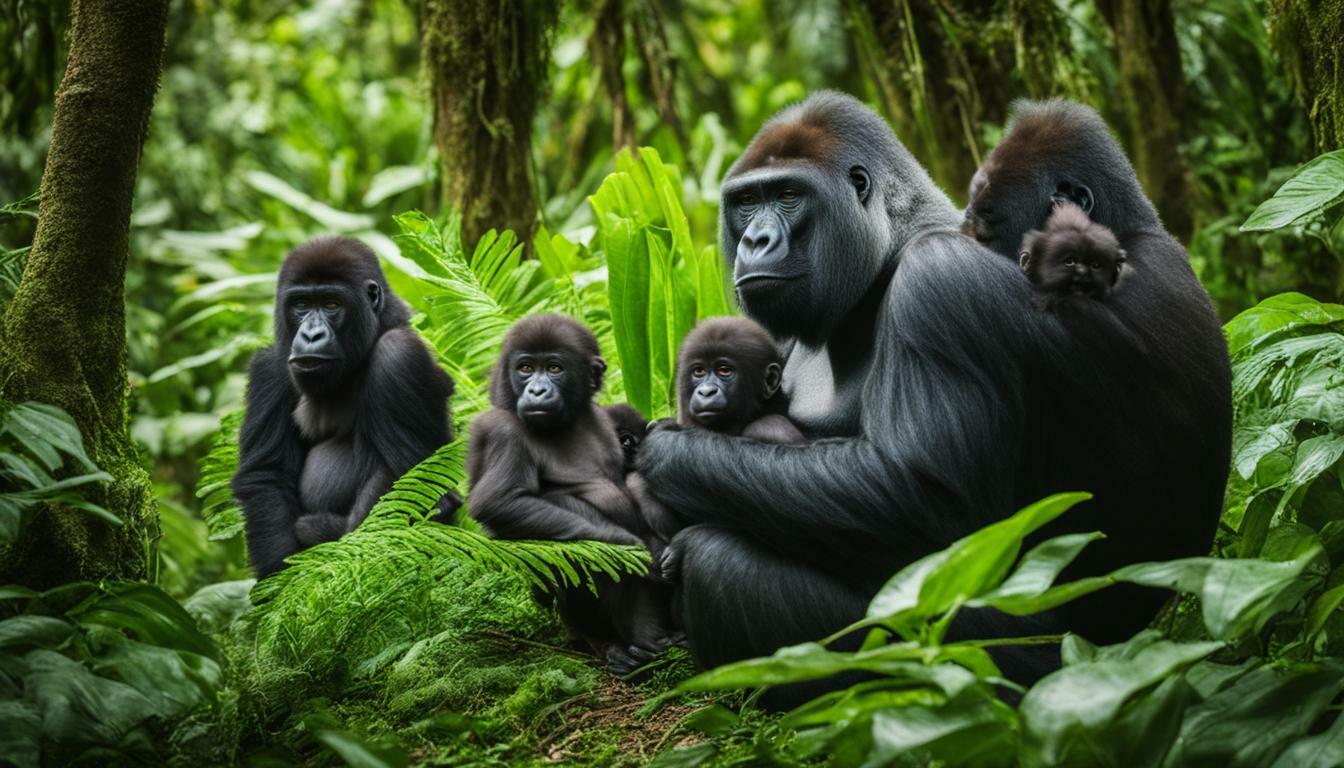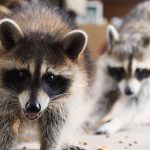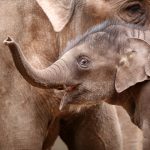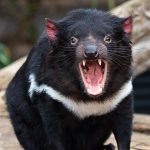Gorilla parenting and family dynamics offer a captivating glimpse into the intricate world of primate behavior and parenting techniques. These gentle creatures, with their individual personalities and rich social lives, exhibit fascinating behaviors in their natural habitats. From the role of the silverback in gorilla families to the ways in which they communicate and form affectionate bonds, gorilla family dynamics are both fascinating and complex.
In this section, we will delve into the behaviors, techniques, and social structures that gorillas exhibit in their natural habitats. We will explore the important role that the silverback plays in infant development and protection, as well as the diverse ways in which gorillas communicate through facial expressions, sounds, postures, and gestures. We will also highlight the tight bonds shared between gorilla mothers and their offspring, and the striking similarities between gorilla and human social dynamics.
Observing gorillas in zoos can deepen our understanding and empathy for these incredible creatures, and contribute to wild conservation efforts. By witnessing the connection between a gorilla mother and a human mother, we can gain a new perspective on our own kinship relationships and the importance of family bonds.
Key Takeaways:
- Gorilla parenting and family dynamics provide insights into primate behavior and parenting techniques.
- The silverback is a crucial figure in gorilla families, serving as the family’s protector and decision-maker.
- Gorillas communicate through facial expressions, sounds, postures, and gestures.
- Affectionate bonds form within gorilla family groups, highlighting the importance of social connections.
- Gorillas share 98% of their genes with humans, exhibiting behaviors similar to humans.
The Role of the Silverback in Gorilla Families
The silverback’s leadership and presence play a crucial role in maintaining gorilla social organization and ensuring parental investment in the family. As the dominant male, the silverback is responsible for protecting the group from potential threats and making important decisions for the family unit. With their large size and impressive strength, silverbacks are well-equipped to defend their families from predators or other rival gorillas.
Within the gorilla social structure, the silverback maintains order and establishes a hierarchy. They assert their dominance through displays of power, such as chest-beating and vocalizations, which communicate their authority to other members of the group. This authoritative figure guides the family’s movements, leading them to food sources and suitable resting areas.
The silverback also plays a vital role in ensuring parental investment within the gorilla family. They provide protection and guidance to the younger members, teaching them essential survival skills and behaviors. By actively engaging with the infants and juveniles, the silverback fosters a sense of security and stability within the family unit.
| Role of the Silverback | Responsibilities |
|---|---|
| Protector | Defends the family from threats |
| Decision-maker | Makes important choices for the family |
| Leader | Establishes hierarchy and guides family movements |
| Teacher | Provides guidance and survival skills to younger members |
Communication and Bonding Among Gorillas
Gorillas have a rich repertoire of communication methods, relying on facial expressions, sounds, postures, and gestures to establish and maintain affectionate bonds within their family groups. These gentle creatures use a combination of visual and vocal cues to convey their intentions, emotions, and social status.
Facial expressions play a significant role in gorilla communication. Their expressive faces can convey a wide range of emotions, including happiness, fear, and even anger. For example, bared teeth and hooting sounds can indicate aggression, while a gentle touch or a soft vocalization can express comfort and affection.
In addition to facial expressions, gorillas rely on various sounds to communicate with one another. They use different vocalizations, such as grunts, roars, and even chest beats, to convey meaning and establish their presence. These vocal signals help maintain social order within the group and facilitate coordination during activities like feeding and mating.
Postures and gestures also play a vital role in gorilla communication. These primates use specific body movements, such as chest thumping or standing upright on their hind legs, to display dominance or assert their authority. They also use gentle touches, grooming, and embracing to strengthen emotional bonds and reinforce social cohesion within the family group.
| Methods of Communication | Examples |
|---|---|
| Facial Expressions | Bared teeth, relaxed gaze, playful grimaces |
| Sounds | Grunts, roars, chest beats |
| Postures | Chest thumping, standing upright |
| Gestures | Gentle touches, grooming, embracing |
Gorillas have an incredible ability to communicate non-verbally. Their subtle yet powerful expressions and movements allow them to maintain social harmony and strengthen their bonds. It is truly fascinating to observe their intricate communication system in action, as it reveals their deep emotional connections and intelligence.
The affectionate bonds that gorillas form within their family groups are crucial to their social dynamics. These bonds are not limited to the mother-infant relationship but extend to all members of the gorilla family. The shared grooming sessions, playful interactions, and comforting embraces contribute to the strong sense of community and support within the group.
By studying and understanding the communication and bonding behaviors of gorillas, we gain a greater appreciation for their complex social lives and their connection to our own human experience. These remarkable creatures remind us of the importance of emotional connections and the power of non-verbal communication in maintaining strong family bonds.
Maternal Instincts and Infant Development in Gorilla Families
Gorilla mothers exhibit remarkable maternal instincts, fostering the healthy development and protection of their offspring within the family unit. These gentle creatures display a deep sense of care and devotion towards their young, ensuring their well-being and survival in their natural habitat.
Offspring are nurtured and closely watched by their mothers from birth, forming a bond that lasts a lifetime. Gorilla mothers provide their infants with constant attention, warmth, and guidance. They teach them important life skills, such as climbing, foraging, and social interaction, preparing them for independent adulthood.
To ensure the safety of their offspring, gorilla mothers create a nurturing environment within the family group. They establish a strong support system, with other adult females often lending a helping hand in childcare. This communal care allows gorilla mothers to focus on their infants’ development while knowing they have a network of trusted individuals around them.
“The maternal bonds observed in gorilla families are truly heartwarming. The love and dedication these mothers show towards their offspring is awe-inspiring.” – Jane Goodall, Primatologist
Infant Protection and the Role of Silverbacks
While gorilla mothers play a crucial role in raising their young, the family structure also relies on the presence of a dominant male, known as the silverback. Silverbacks serve as protectors and leaders, ensuring the safety of the entire family unit.
These majestic males exhibit a strong sense of responsibility towards the infants within their group, defending them against potential threats and guiding them through their early stages of life. The silverback’s presence offers stability and security, enabling the mothers to focus entirely on their offspring.
| Gorilla Mother’s Role: | Silverback’s Role: |
|---|---|
| Nurturing and teaching offspring | Protecting the family unit and leading |
| Creating a supportive environment | Ensuring safety and stability |
| Maintaining social bonds within the family | Defending against threats |
Gorilla families thrive on the strong maternal instincts of their mothers and the protective presence of the silverbacks. This harmonious combination of caregiving and leadership allows for the healthy development and protection of the young, contributing to the intricate social dynamics of these remarkable primates.
Parallels Between Gorilla and Human Social Dynamics
Remarkably, gorillas share 98% of their genes with humans, leading to fascinating parallels in their kinship relationships and social dynamics. Just like humans, gorillas form tight-knit family groups where strong bonds are crucial for the well-being and survival of the group. These similarities in social organization highlight the evolutionary connection between humans and our primate relatives.
In both gorilla and human societies, family bonds are of utmost importance. Gorilla mothers, like their human counterparts, exhibit strong maternal instincts and provide nurturing care to their offspring. They form a deep bond with their young, ensuring their protection and guiding their development. Similarly, human mothers play a vital role in the upbringing and well-being of their children, fostering emotional connections and encouraging growth.
Communication is another fascinating parallel between gorillas and humans. While humans rely heavily on verbal language, gorillas communicate through a rich repertoire of non-verbal cues. Facial expressions, sounds, postures, and gestures all play a vital role in conveying messages and maintaining social order within the gorilla community. This mode of communication bears a striking resemblance to human non-verbal communication, highlighting the shared evolutionary roots between our species.
Moreover, the formation of kinship relationships in gorilla groups mirrors that of human societies. Both humans and gorillas establish complex social hierarchies, with individuals occupying different positions based on factors such as age, strength, and social connections. These kinship relationships help foster cooperation, maintain order, and ensure the well-being of the group as a whole.
Table: Comparing Gorilla and Human Social Dynamics
| Aspect | Gorilla Social Dynamics | Human Social Dynamics |
|---|---|---|
| Family Bonds | Tight-knit family groups with strong maternal care and bonding between offspring and parents. | Close-knit families with strong bonds between parents and children. |
| Communication | Non-verbal communication through facial expressions, sounds, postures, and gestures. | Verbal and non-verbal communication through language, facial expressions, body language, and gestures. |
| Kinship Relationships | Complex social hierarchies based on age, strength, and social connections. | Complex social hierarchies based on factors such as age, social status, and relationships. |
By understanding these parallels between gorilla and human social dynamics, we can gain a deeper appreciation for our primate relatives and the complex social lives they lead. These insights not only shed light on the fascinating behavior of gorillas but also evoke a sense of interconnectedness and empathy between humans and these gentle creatures.
Raising Awareness through Zoo Observation
Observing gorillas in zoos not only offers a unique opportunity to connect with these amazing creatures but also fosters awareness and empathy for their conservation in the wild. As you witness these gentle giants up close, you begin to appreciate their individual personalities and rich social lives.
One of the remarkable aspects of observing gorillas in a zoo setting is the chance to see a silverback in action. These mature male gorillas serve as the family’s protectors and decision-makers, and their role is key to the overall dynamics of the gorilla family. Witnessing the interactions between the silverback and other family members provides insights into the importance of strong leadership and parental investment among gorillas.
Communication among gorillas is another fascinating aspect to observe. Through their facial expressions, sounds, postures, and gestures, they convey a wide range of emotions and intentions. It is truly awe-inspiring to witness their nonverbal communication and understand the depth of their social bonds. Gorillas are affectionate creatures, and you can see their bonds strengthen as they engage in grooming sessions and gentle touches with their family members.
The connection between humans and primates
Gorilla mothers and their offspring share a special bond that is heartwarming to witness. Gorilla mothers are incredibly nurturing and protective, ensuring the well-being and development of their young. This bond between mother and child parallels the maternal instincts seen in human mothers, highlighting the close genetic relationship between gorillas and humans.
By observing gorillas in zoos, we gain a deeper understanding of the connection between humans and primates. It reminds us of the importance of conservation efforts to protect these magnificent creatures in the wild. As we witness the interaction between a gorilla mother and a human mother at a zoo, we are reminded of the shared experiences and emotions that unite us all.
| Benefits of Gorilla Zoo Observation |
|---|
| Provides a unique opportunity to connect with gorillas |
| Fosters awareness and empathy for their conservation in the wild |
| Offers insights into gorilla social dynamics and family bonds |
| Highlights the genetic similarities and connection between humans and primates |
Conclusion
In conclusion, the fascinating world of gorilla parenting and family dynamics reveals the intricate nature of their social structure and emphasizes the significance of family bonds in their lives.
Gorillas, gentle creatures with individual personalities, form complex family groups led by a dominant silverback. The silverback serves as the family’s protector and decision-maker, ensuring the safety and well-being of the entire group.
Communication among gorillas is multifaceted, with facial expressions, sounds, postures, and gestures playing vital roles in their interactions. Through these forms of communication, affectionate bonds are formed within the family, highlighting the importance of emotional connections.
Gorilla mothers exhibit strong maternal instincts, nurturing and protecting their offspring with unwavering dedication. The silverbacks also contribute significantly to infant development and protection, reinforcing the importance of their role in the family dynamics.
Remarkably, gorillas share 98% of their genes with humans, displaying behaviors such as maternal instincts and social dynamics that parallel our own. This genetic similarity underscores the profound connection between humans and primates.
Observing gorillas in zoos can be a powerful way to raise awareness and empathy for these incredible creatures in the wild. By witnessing the interaction between a gorilla mother and a human mother, we can deepen our understanding of the bonds shared between humans and primates, inspiring us to advocate for their conservation.
In summary, the intricate social structure of gorilla families underscores the importance of family bonds in their lives. Gorillas, with their remarkable similarities to humans, provide us with a unique window into the complexities and beauty of family dynamics in the animal kingdom.
How Does the Gorilla Diet Impact Their Parenting and Family Dynamics?
Gorilla diet and feeding overview greatly influence their parenting and family dynamics. As herbivores, gorillas mainly consume vegetation like leaves, stems, and fruits, which requires large amounts of time and energy. This influences their social structure, as adults engage in feeding for several hours a day, creating a bond and promoting family unity. Additionally, the diet affects reproductive success, with females needing specific nutrients for healthy pregnancies and nursing offspring.
FAQ
Q: What are some examples of gorilla communication?
A: Gorillas communicate through facial expressions, sounds, postures, and gestures.
Q: How do gorillas form bonds within their family groups?
A: Gorillas are affectionate creatures and form strong bonds within their family groups.
Q: What is the role of the silverback in a gorilla family?
A: The silverback is a mature male gorilla who serves as the family’s protector and decision-maker.
Q: Do gorilla mothers have strong bonds with their offspring?
A: Yes, gorilla mothers have tight bonds with their offspring and play an important role in their development and protection.
Q: Are there similarities between gorilla and human social dynamics?
A: Yes, gorillas share 98% of their genes with humans and exhibit behaviors similar to humans, such as maternal instincts and social dynamics.
Q: How can observing gorillas in zoos help raise awareness for their conservation?
A: Observing gorillas in zoos can help raise awareness and empathy for them in the wild, highlighting the connection between humans and primates.
Q: What is the importance of family bonds in gorilla social structure?
A: Gorilla family dynamics and relationships are complex, demonstrating the importance of family bonds in their social structure.







